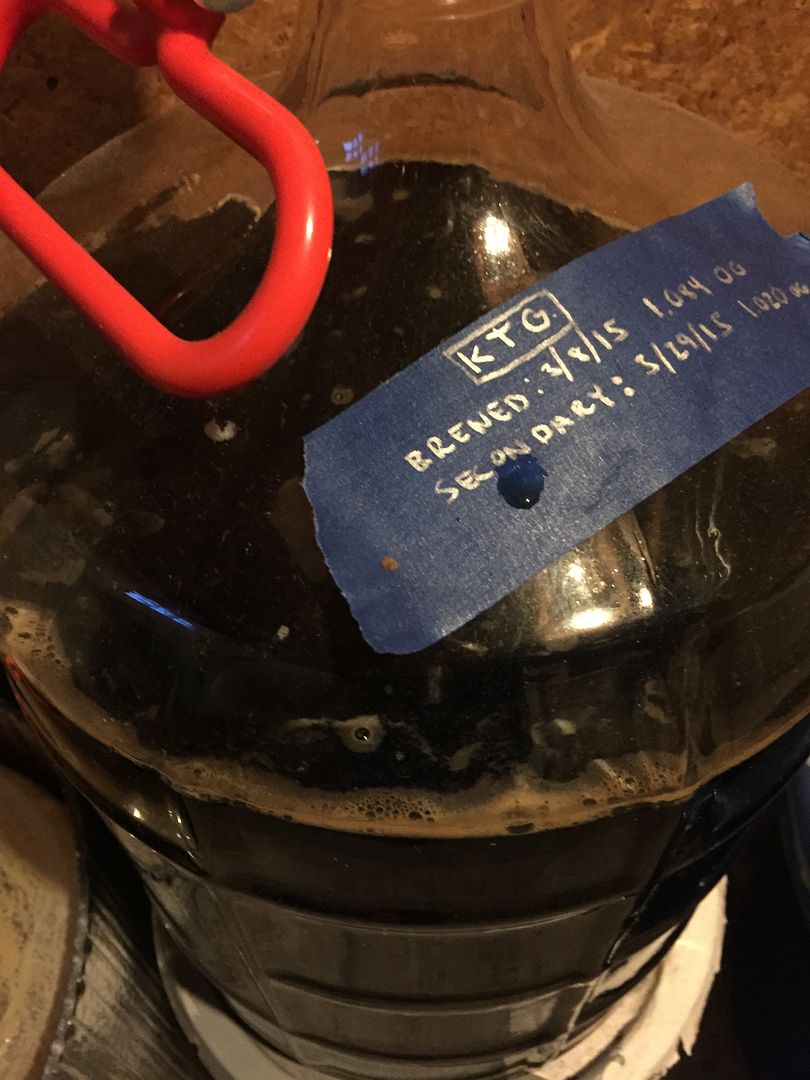Adirondack47
Active Member
I have a question for some of you more experienced brewers as I think I might have a problem on my hands with this brew.
I brewed this recipe on 3/8, (OG 1.084) and racked it to secondary on 3/28 (FG 1.020). I put it in a glass carboy in the basement where it has sat ever since. For the last 6 months, there was no activity and the carboy remained ink black and silent.
My plan from the beginning was to keep it in secondary for about 6 months and then put some oak beans that have been soaking in Makers Mark for the last year into the carboy for a week or two and then bottle.
While doing laundry this weekend, I noticed a few clouds of light foam had suddenly formed on the surface and that airlock activity had started again. We have had temperatures in the 90's for the last week or so and I'm wondering if the sustained/increased temperature is causing a re-fermentation or if I have possibly might have another issue on my hands.
A trusted fellow home brewer at our meeting tonight suggested that I might have an infection and that I should either bottle it right away, cold crash it or just let it ride if i'm feeling adventurous. I have quite a bit of coin and sweat into this batch and would like to turn out a nice, BBA aged stout that I can proudly put into 375ml Belgian bottles and give to friends as gifts for Christmas. I pulled an unoaked sample last night to taste and I was impressed with what I found; not a lot of body but it was mildly sweet, fudgey, had good hints of mocha and coffee and was generally as good of an imperial stout that ive had from some national breweries.
Has anyone ever had something similar to this happen and have any suggestion on what might be going on and how I could keep the batch from being ruined?
I brewed this recipe on 3/8, (OG 1.084) and racked it to secondary on 3/28 (FG 1.020). I put it in a glass carboy in the basement where it has sat ever since. For the last 6 months, there was no activity and the carboy remained ink black and silent.
My plan from the beginning was to keep it in secondary for about 6 months and then put some oak beans that have been soaking in Makers Mark for the last year into the carboy for a week or two and then bottle.
While doing laundry this weekend, I noticed a few clouds of light foam had suddenly formed on the surface and that airlock activity had started again. We have had temperatures in the 90's for the last week or so and I'm wondering if the sustained/increased temperature is causing a re-fermentation or if I have possibly might have another issue on my hands.
A trusted fellow home brewer at our meeting tonight suggested that I might have an infection and that I should either bottle it right away, cold crash it or just let it ride if i'm feeling adventurous. I have quite a bit of coin and sweat into this batch and would like to turn out a nice, BBA aged stout that I can proudly put into 375ml Belgian bottles and give to friends as gifts for Christmas. I pulled an unoaked sample last night to taste and I was impressed with what I found; not a lot of body but it was mildly sweet, fudgey, had good hints of mocha and coffee and was generally as good of an imperial stout that ive had from some national breweries.
Has anyone ever had something similar to this happen and have any suggestion on what might be going on and how I could keep the batch from being ruined?


















































![Craft A Brew - Safale S-04 Dry Yeast - Fermentis - English Ale Dry Yeast - For English and American Ales and Hard Apple Ciders - Ingredients for Home Brewing - Beer Making Supplies - [1 Pack]](https://m.media-amazon.com/images/I/41fVGNh6JfL._SL500_.jpg)








